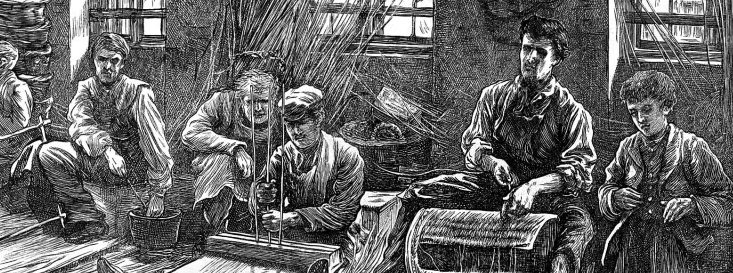Disability Activism During The Industrial Revolution
Category: Equality, History

Introduction
The Industrial Revolution was a time of increased standardisation. Anyone who did not fit into standard models of behaviour or physiognomy was increasingly marginalised. They responded by organising to campaign for their human rights. People with physical or sensory differences were at the forefront of those fighting for better treatment and understanding.
The number of people injured in the factories and mines saw disability becoming increasingly politicised. The term “factory cripple” was deliberately used to present disabled factory workers as objects of pity in much the same way as many abolitionists had done. But many disabled workers saw this as problematic and sought to reclaim the term, becoming crucial activists within the labour movement.
Disabled People’s Activism in Victorian Britain
An article posted on the History Workshop website by David Turner, Professor of History and Director of the Research Institute for Cultures and Communities at Swansea University.
Disability & Political Activism in Industrialising Britain, 1830–1850
An article exploring disabled people’s political activism in Britain, with particular focus on the campaign for shorter working hours in the 1830s and 1840s. It explores how the self-proclaimed “factory cripples” engagement in the fight for shorter hours also helped to advance a socio-cultural understanding of disability.
William Dodd, a “Factory Cripple”
William Dodd was born on 18th June 1804, in 1804 in Kendal, Westmorland. By the age of 5, he was working with the rest of his family in a textile factory, where he might work as long as 18 hours a day. Within a few years Dodd’s joints were like “rusty hinges,” causing him a great deal of pain and swelling, limiting his mobility. After attending evening classes he learned to read and was asked to help with the clerical work in the factory. But his disability made his work increasingly difficult. He moved down to London where he took a series of temporary jobs. By the spring of 1840 the pain in his joints became intolerable. After amputating his right arm, the doctors told him that his bones resembled honeycomb.
Dodd blamed his life of factory work for his disability and described his experiences in his book, ‘A Narrative of the Experience and Sufferings of William Dodd, a Factory Cripple.’ He sent a copy to the social reformer, Lord Ashley Earl of Shaftesbury, who decided to employ Dodd to research the treatment of children in textile factories. This was published in 1842 as ‘The Factory System: Illustrated.’ The books caused controversy and Dodd’s character was attacked in parliament, resulting in Lord Ashley sacking him. Dodd emigrated to the United States where his book ‘The Labouring Classes of England,’ was published in 1847. After this he disappeared from view and the date of his death is unknown.
You can download more information from the following links



